The history of coffee in India is long and interesting, stretching back to the 16th century. India is now a major player in the global coffee industry, renowned for its high-quality crop exports and thriving coffee culture. The primary coffee-growing areas are Southern Karnataka, Kerala, Tamil Nadu, and Arunachal Pradesh in the country’s northeast. In India, many small farmers and cooperatives play a crucial role in the coffee industry, defined by a strong focus on sustainable and organic farming practices.
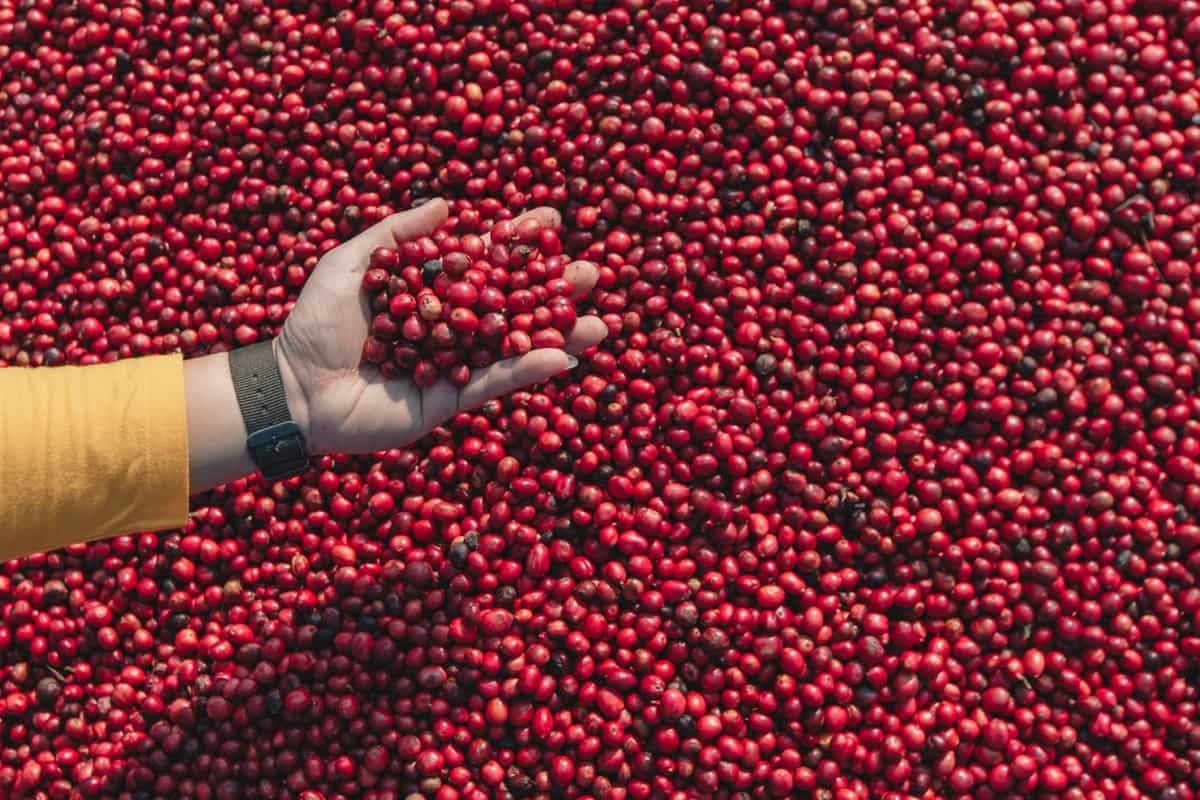
A brief History of Coffee Cultivation in India
Coffee cultivation has a long history that began in Ethiopia and later spread to Yemen. In India, coffee growing began with a Muslim saint named Baba Budan, who smuggled seven coffee beans from Yemen to Mysore in India. He planted them on a hill in the Chikkamagaluru district, which marked the beginning of the coffee industry in India.
Coffee cultivation spread to other areas of South India and soon became a popular export commodity during British colonial rule. Initially, Arabica was the popular variety of coffee grown in India. However, due to serious infestations caused by coffee rust, Robusta and a rust-tolerant hybrid variety of Arabica trees became popular.
In 1942, the Indian government passed the Coffee VII Act to regulate the export of coffee and establish the Coffee Board of India. Over the last 50 years, coffee production in India has grown significantly. Economic liberalization in 1991 provided further opportunities for the industry to expand. Amendments in 1993, 1994, and 1996 further liberalized the coffee industry, allowing growers to sell their products domestically or internationally.
Production and Distribution of Coffee in India
India is a small producer of coffee, accounting for only 2.5% of the world’s production. Coffee Arabica and Coffee Robusta are the two main varieties grown in India, with 49% and 51% of the area, respectively. The plantations are mainly located in the south, in hill areas around Nilgiris, with Karnataka, Kerala, and Tamil Nadu being the main producing states.
In case you missed it: How to Make Homemade Fertilizers: Recipes for Banana Peels, Scraps, Coffee Grounds, Epsom Salt, Eggshells, and Grass Clippings
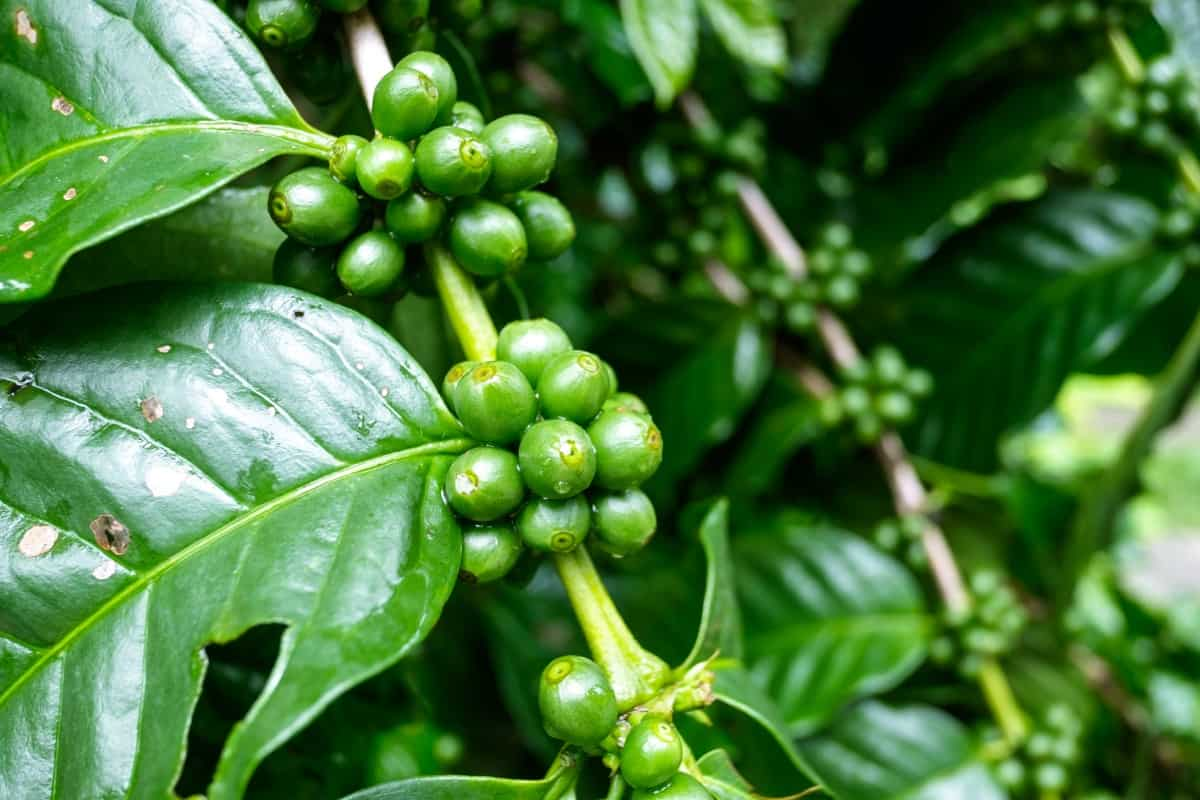
Karnataka is the largest producer, accounting for 70% of the country’s production and having the highest yield. Kerala is the second largest producer, with a lower yield than Karnataka. Tamil Nadu is the third largest producer; most coffee is produced in the Nilgiri district. Coffee is also grown in some non-traditional areas as part of the national policy of tribal development.
Importance of Coffee Production in India
Coffee production has contributed to India’s economy over the last 50 years. Although India produces a small amount of coffee, its quality has made it popular internationally. Indian Rebustas are well-liked for their blending qualities, and Arabic coffee is well-received. India exports coffee to many countries, including the U.K., the U.S.A., Russia, Australia, Iraq, and continental Europe.
The chief ports of export are Chennai, Mangalore, and Calicut. In recent years, India’s coffee exports have increased significantly in quantity and earnings. In 2003-04, India exported two-thirds of its coffee production, amounting to 188 thousand tonnes and earning Rs. 1,066 crores.
Facts on Coffee Cultivation in India
- Coffee cultivation is an important agricultural activity in India. Karnataka is the largest producer, accounting for 71% of the country’s coffee production.
- The Arabica variety is the best-known coffee bean variety. It is grown globally, with over 60% of the world’s coffee supply being Arabica.
- Cool to warm tropical climatic conditions are suitable for coffee cultivation, with ideal temperature ranges varying based on the coffee variety.
- Coffee plants can become fruit/berries within 3-4 years of planting or transplanting seedlings. Brazil is the world’s largest producer of coffee, meeting almost 40% of the world’s coffee demand.
- Other major global coffee farming players include Vietnam, Colombia, Indonesia, Honduras, Ethiopia, Peru, India, Guatemala, and Uganda. Arabica is the tastiest coffee variety in India, accounting for 60% of production.
- The coffee production process involves various steps, including planting, harvesting, processing, drying, milling, and roasting. Cherries can be harvested through the strip-picked or selectively picked method, either by hand or machine.
- The coffee stages are pre-planting, nursery, planting stage, young coffee plantations, and reproductive stage. Coffee farming can be easy, requiring the right amount of light, water, and humidity to produce quality coffee beans.
- To support coffee cultivation, the Indian government has introduced various schemes, such as the Integrated Coffee Development Project (ICDP), which aims to enhance coffee seed quality and production, cultivate high-yielding coffee varieties, and provide development support to smallholder farmers invested in coffee cultivation.
In case you missed it: How to Grow Mushrooms in Coffee Grounds at Home: Steps, Ideas, and Tips for Beginners
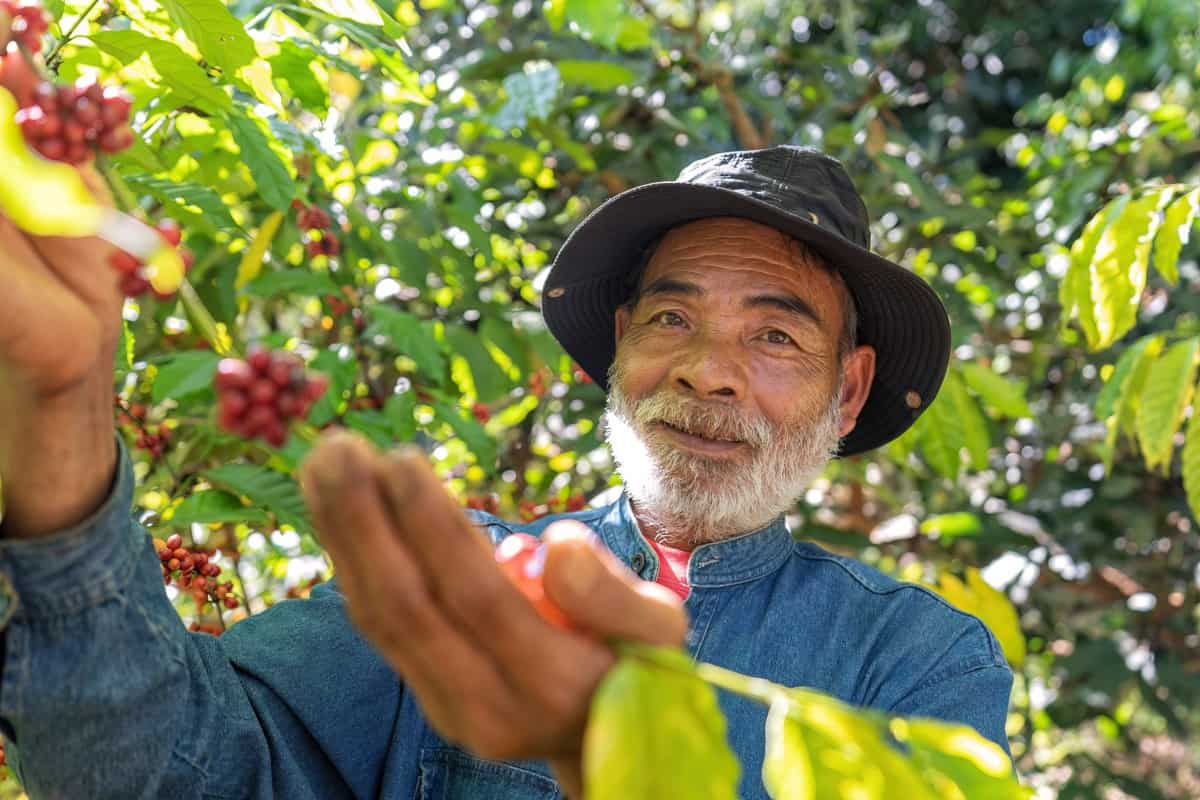
Best States to Grow Coffee in India
India is one of the major coffee-producing countries in the world, with Karnataka being the largest producer of coffee in the country.
- Karnataka – Karnataka state is the largest coffee producer in India, accounting for 70% of the country’s coffee production. Its production volume in the fiscal year 2022 was 2.33 lakh metric tons. The Kodagu district alone accounts for 44% of the total coffee area in Karnataka.
- Kerala – Kerala is India’s second-largest coffee-producing state, known for growing Arabica and Robusta varieties. It produced 67700 metric tons of coffee in the current fiscal year.
- Tamil Nadu – Tamil Nadu is India’s third largest coffee producer, with an annual production of 17,875 metric tonnes of Arabica coffee. The Pulneys and Bodi districts are the leading regions in Tamil Nadu for coffee production.
- Andhra Pradesh – Andhra Pradesh is known for its “Araku” coffee and is the fourth largest producer of coffee in India, with an annual production of 7,425 metric tons.
- Odisha – Odisha is India’s fifth largest coffee-producing state, with a production volume of 550 metric tonnes in the current fiscal year. The Rayagada, Koraput, Phulbani, and Keonjhar districts are the major coffee-producing regions in Odisha.
- Tripura – Tripura is India’s sixth largest coffee producer, with an estimated production volume of 12 to 14 metric tons. It is known for producing high-quality Arabica and Robusta coffee varieties.
- Nagaland – Nagaland is the seventh largest producer of coffee in India, using approximately 9,832 hectares of land to grow coffee. The state’s area under coffee production is expected to reach 50,000 hectares by 2030.
- Meghalaya – Meghalaya is the eighth largest producer of coffee in India, with a wide production of robusta and arabica varieties. Robusta is grown in low altitude areas ranging between 500-1000 meters, while Arabica is grown at high altitudes between 1000-1500 meters.
- Manipur – Manipur is India’s ninth largest coffee-producing state, with Coffea Arabica and Coffea canephora being the most popular varieties grown in the state.
- Assam – Assam is India’s tenth largest coffee producer, with its coffee production starting in the Cachar district in 1953. The Kaziranga National Park in Assam is famous for its popular varieties of coffee plantations.
In case you missed it: Top 20 Steps to Boost Coffee Bean Yield: How to Increase Production, Quality, size, and Tips
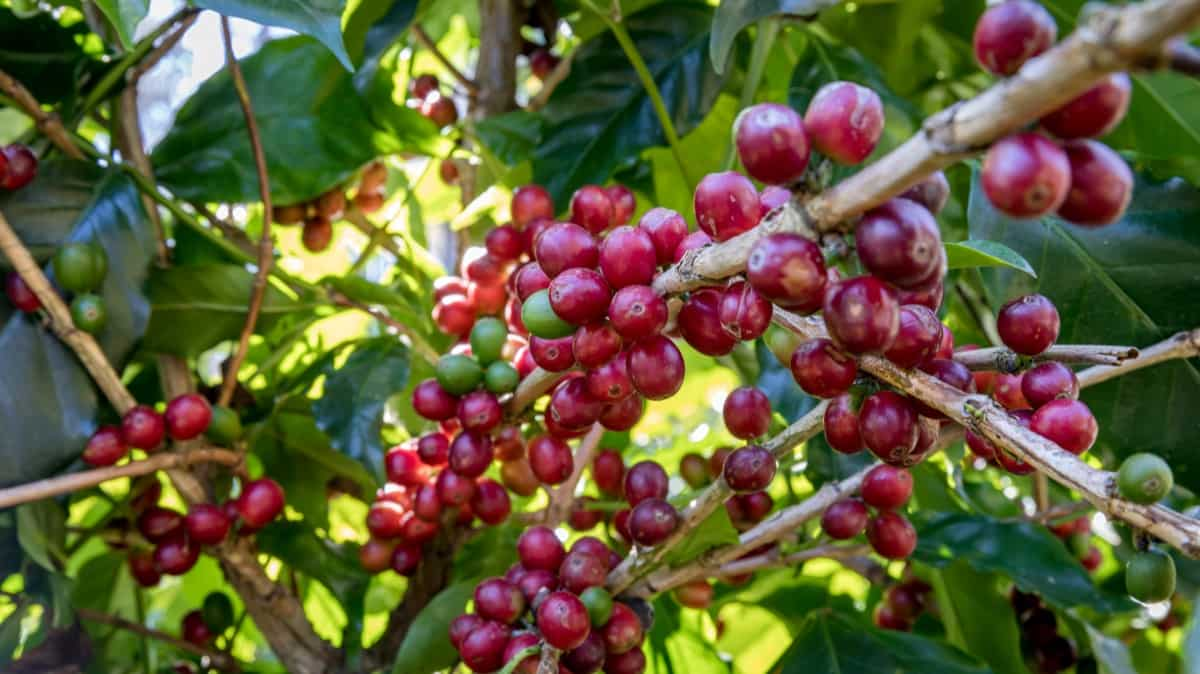
Farming Practices and Production Guide in Indian Coffee Cultivation
Growth Conditions
Coffee plants require a hot and humid climate with a temperature range of 15°C to 28°C and rainfall between 150 to 250 cm. They cannot tolerate frost, snowfall, high temperatures above 30°C, or strong sunlight and are typically grown under the shade of trees. Coffee is grown on hill slopes at elevations between 600 to 1,600 meters above sea level, with northern and eastern aspects of slopes being preferred due to less exposure to strong afternoon sun and southwest monsoon winds.
Soil Conditions
Well-drained, rich loamy soils containing humus, iron, and calcium are ideal for coffee cultivation. Arabica and Robusta thrive in slightly saline soil with good drainage and plenty of rich organic matter. (pH 6.0–6.5). Proper manuring is necessary to retain and replenish soil fertility and increase productivity.
Nursery
To ensure a successful coffee plantation, it is important to procure seeds from authorized sources and avoid areas infected by coffee berry borers. Additionally, it is crucial to sow the seeds immediately as they have a short viability.
Propagation
In India, the most commonly used propagation method for coffee is through seeds. However, there has been a shift towards vegetative propagation methods, such as grafting and cutting, in recent years. Seeds are collected from ripe berries, processed, and sown in nurseries. After germination, the seedlings are transplanted into the field. Using healthy and disease-free seeds, along with proper care and maintenance, results in healthy and high-yielding coffee plants.
Soil & Water Conservation
Soil and moisture conservation is important for coffee plantations. Contour planting/terracing and the use of soil-binding grasses are two methods that can be used to accomplish soil conservation. Growing leguminous green manure crops like Crotalaria, Tephrosia, cowpea, horse gram, etc., enriches the soil. Cover digging, scuffling, and manual weeding are useful in suppressing weed growth. Cradle pits/trenches and mulching can help conserve soil and moisture.
Shade Management
Shade management is an important aspect of coffee plantations. Maintaining a two-tier shade canopy consisting of temporary and permanent shade trees is important. Timber extraction should be avoided for short-term gains. Regulating shade every year helps minimize damage to coffee bushes.
Bush Management
Proper bush management is essential in minimizing year-to-year yield fluctuations and managing pests and diseases effectively. Light pruning every year after harvest is crucial to maintain the framework of the plants. Handling, centering, and desuckering during June-July help maintain good wood cropping. Rejuvenation of disease-susceptible plants by top working increases productivity.
In case you missed it: Best Fertilizer for Coffee Plants: Organic, Liquid, NPK, Compost Manure, and Schedule
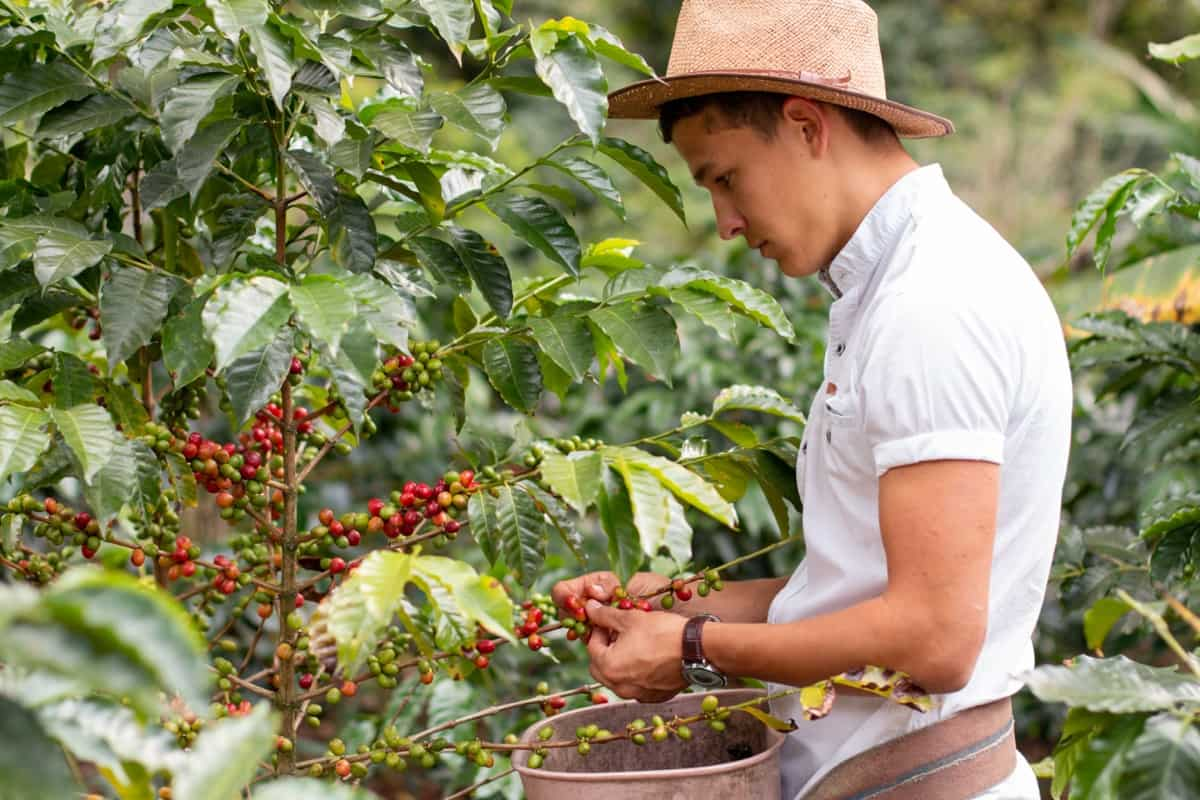
Nutritional management
Liming to keep pH at optimal levels is crucial for a productive coffee farm. Maintaining a consistent soil pH requires annual or biannual soil testing. Dolomite lime and 5 tons per hectare of organic bulk fertilizer (compost or FYM) are being applied. Soil health and the efficiency of applied nutrients can be enhanced by doing this every two years. When fertilizing in sloppy areas, the top half of the drip circle should be fertilized in three separate applications (after blossom, before monsoon, and after monsoon).
Pests and Diseases
- White stem borer.
- Coffee berry borer.
- Shot hole borer.
- Nematodes.
- Sucking pests such as mealybugs and green scales.
Among the diseases, coffee leaf rust, black rot, and root diseases are the major ones that cause crop losses. These strategies include continuous monitoring of pest and disease outbreaks, pruning the bushes, maintaining the overhead shade, and also timely use of pesticides.
For instance, white stem borer can be controlled by maintaining optimum shade, tracing infested plants before flight periods, uprooting and burning them, removing loose scaly bark, and applying a lime solution on the main stem and thick primaries. Coffee leaf rust can be controlled by using resistant varieties, maintaining optimum shade, and applying copper-based fungicides.
Harvest Coffee Beans
Coffee plants start producing full fruit/berries by the third year, but the best yield is obtained after waiting for five years. Coffee plantations can provide good yields for up to 50-55 years. Four popular methods for coffee harvesting are fly picking, main picking, stripping, and cleanings.
Fly picking involves small-scale picking of ripe berries between October to February. The main picking is done in December, and it is the most common harvesting method for a high yield. Stripping involves picking berries irrespective of their ripening stage. Cleanings involve collecting surplus berries that might have been accidentally dropped during the final produce procurement.
Post-Harvest
Coffee is processed using either the wet or dry method, depending on the coffee produced. It is important to pick only ripe berries for the best cup quality. Overripe or unripe berries should be sorted and processed separately. Keep processing equipment clean and pulp the fruits on the same day as harvesting.
Use clean water for washing and soak parchment coffee in water overnight to enhance its quality. During drying, sort out defective beans and dry them on wire mesh trays, followed by clean, tiled, or concrete drying yards. Store the coffee in clean, well-ventilated areas free from dampness, fertilizers, and pesticides. Dispatch the coffee to cure works as soon as possible.
Government Schemes for Growing Coffee Cultivation in India
- The Integrated Coffee Development Project (ICDP) is a scheme launched by the Government of India to promote coffee cultivation and enhance the quality and production of coffee seeds.
- The scheme provides subsidies ranging from Rs.50,000 to 2.75 lakhs to farmers. The first installment is 60-70% of the planned amount, and the second installment is 30-40%.
- The ICDP also promotes advanced agri-technologies among coffee growers, markets locally produced coffee in national and international markets, and supports domestic coffee production and market.
- The scheme aims to strengthen the coffee industry in India and boost its contribution to the economy.
In case you missed it: Earning 8 Lakh Rupees from Spine Gourd Cultivation: A Success Story of Kantola/Teasle Gourd Farmer in India
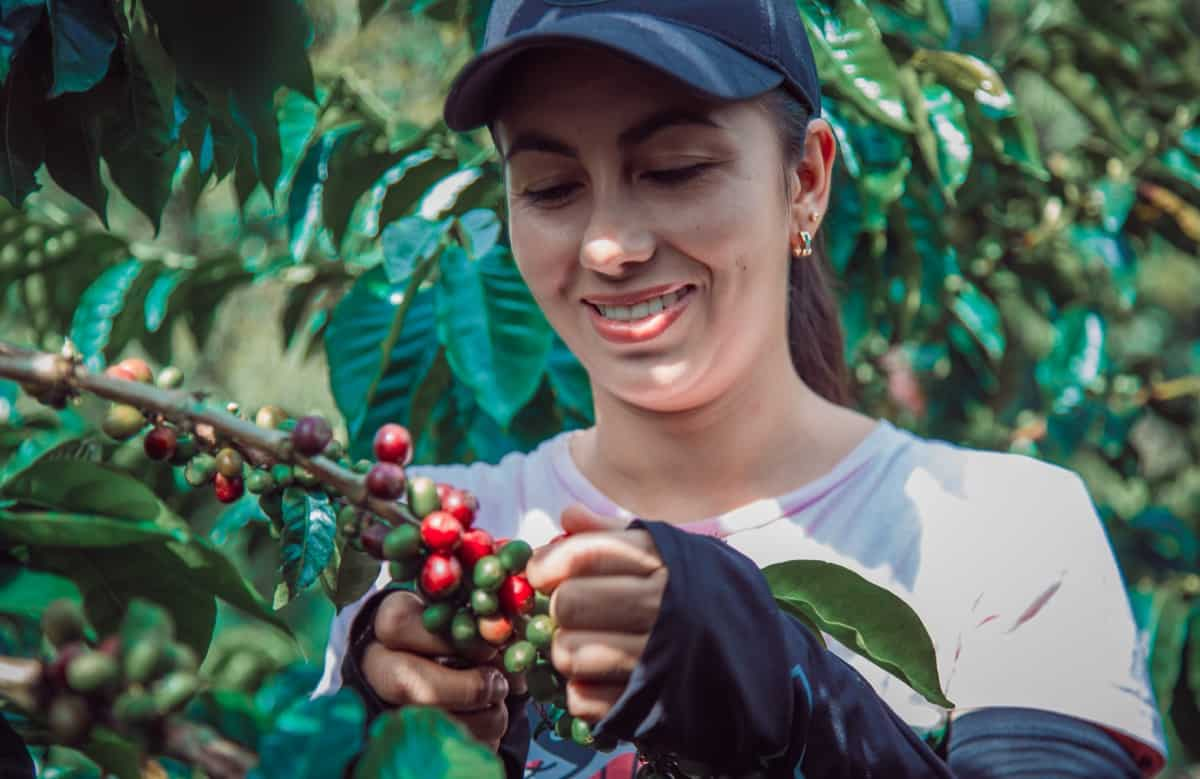
Conclusion
India has several states suitable for coffee cultivation, with Karnataka, Kerala, and Tamil Nadu being the top producers. Good farming practices, such as selecting the right variety, planting at the right time, and maintaining proper post-harvest techniques, can increase production and yield high-quality coffee. With its rich history and growing demand, coffee cultivation can be profitable for Indian farmers.
- Types of Pesticides Used in Agriculture: A Beginner’s Guide
- Economical Aquaculture: A Guide to Low-Budget Fish Farming
- 15 Common Planting Errors That Can Doom Your Fruit Trees
- How to Make Houseplants Bushy: Effective Tips and Ideas
- Innovative Strategies for Boosting Coconut Pollination and Yield
- Pollination Strategies for Maximum Pumpkin Yield
- The Complete Guide to Chicken Fattening: Strategies for Maximum Growth
- Natural Solutions for Tulip Problems: 100% Effective Remedies for Leaf and Bulb-Related Issues
- Revolutionizing Citrus Preservation: Towards a Healthier, Greener Future
- Natural Solutions for Peony Leaf and Flower Problems: 100% Effective Remedies
- Maximizing Profits with Avocado Contract Farming in India: A Comprehensive Guide
- Natural Solutions for Hydrangea Problems: 100% Effective Remedies for Leaf and Flowers
- The Ultimate Guide to Choosing the Perfect Foliage Friend: Bringing Life Indoors
- From Sunlight to Sustainability: 15 Ways to Use Solar Technology in Agriculture
- The Ultimate Guide to Dong Tao Chicken: Exploring from History to Raising
- The Eco-Friendly Makeover: How to Convert Your Unused Swimming Pool into a Fish Pond
- Mastering the Art of Delaware Chicken Farming: Essentials for Healthy Backyard Flocks
- 20 Best Homemade Fertilizers for Money Plant: DIY Recipes and Application Methods
- How to Craft a Comprehensive Free-Range Chicken Farming Business Plan
- Brighten Your Flock: Raising Easter Egger Chickens for Beauty and Bounty
- How to Optimize Your Poultry Egg Farm Business Plan with These Strategies
- Subsidy for Spirulina Cultivation: How Indian Government Schemes Encouraging Spirulina Farmers
- Ultimate Guide to Raising Dominique Chickens: Breeding, Feeding, Egg-Production, and Care
- Mastering the Art of Raising Jersey Giant Chickens: Care, Feeding, and More
- Ultimate Guide to Raising Legbar Chickens: Breeding, Farming Practices, Diet, Egg-Production
- How to Raise Welsummer Chickens: A Comprehensive Guide for Beginners
- How to Protect Indoor Plants in Winter: A Comprehensive Guide
- Ultimate Guide to Grow Bag Gardening: Tips, Tricks, and Planting Ideas for Urban Gardeners
- Guide to Lotus Cultivation: How to Propagate, Plant, Grow, Care, Cost, and Profit
- Agriculture Drone Subsidy Scheme: Government Kisan Subsidy, License, and How to Apply Online
- Ultimate Guide to Raising Araucana Chickens: Breed Profile, Farming Economics, Diet, and Care
- Bringing Hydroponics to Classroom: Importance, Benefits of Learning for School Students
- Ultimate Guide to Raising Polish Chickens: Breed Profile, Farming Economics, Diet, and Care
- Ultimate Guide to Raising Australorp Chickens: Profile, Farming Economics, Egg Production, Diet, and Care
- Silkie Chicken Farming: Raising Practices, Varieties, Egg Production, Diet, and Care
- Sussex Chicken Farming: Raising Practices, Varieties, Egg Production, Diet and Care